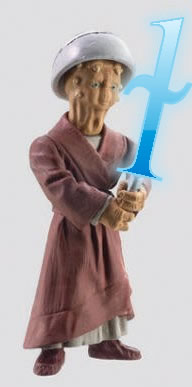Lighten Your Dark L
 Dark L is the version of the /l/ consonant that most English speakers use at the ends of syllables, after a vowel, as in tile, hull, school. Depending on your accent, you may have a different kind of /l/ sound in other settings. Usually initial L, as in light, lovely, luscious, is said with the opposite L, that is the Light L. Perhaps you can hear the difference between these initial-light and final-dark pairs: lie—aisle/I’ll, lee—eel, lay—ail, low—ole, law—awl, allow—owl.
Dark L is the version of the /l/ consonant that most English speakers use at the ends of syllables, after a vowel, as in tile, hull, school. Depending on your accent, you may have a different kind of /l/ sound in other settings. Usually initial L, as in light, lovely, luscious, is said with the opposite L, that is the Light L. Perhaps you can hear the difference between these initial-light and final-dark pairs: lie—aisle/I’ll, lee—eel, lay—ail, low—ole, law—awl, allow—owl.
Light L is spoken with the centre of the front tip of the tongue behind the upper front teeth on the gum ridge. The sides of the tongue do not touch the side teeth. To feel this side space, make an /l/ sound shape with your tongue and then inhale through the shape. You should feel coolness on the sides of your tongue. If you were to say a series of “la, la, la’s”, your tongue should rise up to the gum ridge and back down in a nice flapping kind of motion.
Dark L is also spoken with the centre of the front tip of the tongue behind the upper front teeth on the gum ridge, however, the back of the tongue also rises up toward the soft palate, also known as the velum. To feel this, say a word like awl. You should be able to hear the “darkening effect” of the rise of the back of the tongue toward the soft palate, which traps the sound further back in the mouth. In some ways it is as if you were saying the /ʊ/; vowel of a word like pull at the same time as you were making the dark L. The IPA symbol for the dark L is either a lower case L with a tilde through it, ɫ —the far more common way of transcribing it—or a lower case L with a superscript velarization diactric after it, which looks like a tiny Greek gamma character, lˠ .
The thing about Dark L is that it tends to affect the vowel sound that precedes it. So if you were to say a word like feel, and you used a particularly dark <span>/ɫ/</span>, the word might break almost into two syllables, fee-yul, as the tongue was yanked back to the velarized sound. This is seen by many as an exaggeration or distortion of the word’s pronunciation, and, if you are speaking verse it might easily give a single syllable word the feeling of having two syllables, which probably would go against the poet’s intent. If your natural accent leads you to say words with a final Dark L, perhaps you could try to lighten that sound to some degree. Note that I’m not recommending that you replace ɫ with l! This would modify your accent to the point where you would sound as though you had an Irish accent. That’s not a bad thing if you are Irish or German! But for most other accents of English, it is inappropriate.
My advice for this is to start out and join the dark side of the L-force. Say feel, fail, fell, file, fool, full, foal, foil, fall, foul, all with a very dark L. Pull that back of tongue arch up close to the soft palate; some would say that in extreme cases you might be pulling it back toward the pharynx. (In that case, the symbol should be with the pharyngealized diacritic, which looks like a superscript backward glottal mark, lˤ.) Now, try it with what you feel is your regular, habitual manner of saying that list of words.
Now my padawan, you need to use the light side of the force, and swing too far towards the way we make initial L: make all those words with a final Light L, which should make your speech sound slightly Irish or German.
The action of the tongue should be very much just the front edge of the tongue coming up behind the upper front teeth, and no velarization AT ALL.
Last step: speak that list of words with a lighter-than-usual, but-still-not-light, L. I think that the words that are preceded by front vowels, feel, fail, fell, file, should feel great with this lighter L, while the words where the final L is preceded by a back vowel, fool, full, foal, foil, fall, foul, might feel a little less comfortable or familiar.